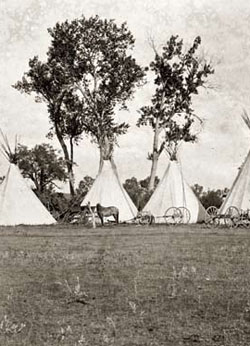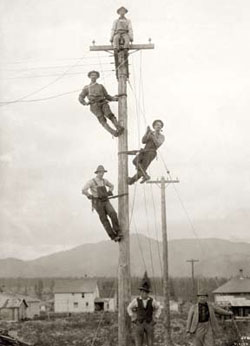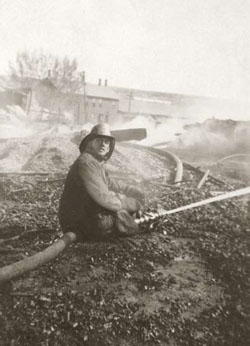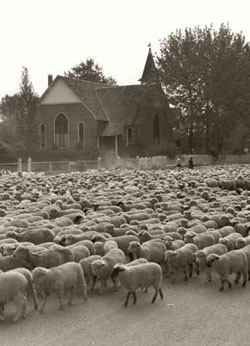Montana: Stories of the Land
Companion Website and Online Teacher's Guide
Chapter 14 - Towns Have Lives, Too, 1870-1920
Chapter 1 - Montana: Where the Land Writes History
Chapter 2 - People of the Dog Days
Chapter 3 - From Dog Days to Horse Warriors
Chapter 4 - Newcomers Explore the Region
Chapter 5 - Beaver, Bison, and Black Robes
Chapter 6 - Montana's Gold and Silver Boom
Chapter 7 - Two Worlds Collide
Chapter 8 - Livestock and the Open Range
Chapter 9 - Railroads Link Montana to the Nation
Chapter 10 - Politics and the Copper Kings
Chapter 11 - The Early Reservation Years
Chapter 12 - Logging in the "High Lonesome"
Chapter 13 - Homesteading This Dry Land
Chapter 14 - Towns Have Lives, Too
Chapter 15 - Progressive Montana
Chapter 16 - Montana and World War I
Chapter 17 - Montanans on the Move
Chapter 18 - The Great Depression Transforms Montana
Chapter 19 - World War II in Montana
Chapter 20 - Building a New Montana
Chapter 21 - A People's Constitution
Chapter 22 - Living in a New Montana
Takeaways
-
Inspired by reading specialist Tammy Elser, who was in turn inspired by SKC graduate Taylor Crawford, we've created a "Takeaway" bookmark for every chapter of Montana: Stories of the Land. Before starting a chapter, print and cut out these bookmarks and distribute them to your students. Ask them to use the Takeaway to summarize the GIST of what they learn from reading assigned sections of the chapter. Remind them that they don't have much room, so they'll need to think before they write down the most important idea they want to take away from the section. Learn a little more about the GIST strategy.
-
Even though we've created Takeaways for every chapter, we don't recommend you have your students complete a Takeaway for every section of every chapter they read. That would be exceedingly tedious. However, used appropriately, they can be a useful tool for encouraging reflection and teaching students how to summarize information.
Websites and Online Lesson Plans
-
The Montana Historical Society has posted "A Guide to Researching Your Historic Property."
-
Camp to Capitol: Step into Helena's Past uses historical photographs to trace Helena's development. Use the booklet to explore Helena - or as a model for creating a similar project in your own community.
-
Exploring Community through Local History: Oral Stories, Landmarks, and Traditions is a lesson plan from the Library of Congress.
-
Check here or with your local chamber of commerce to see if preservationists have created a walking tour brochure for historic districts in a town near you. If there is not a walking tour yet, consider creating one as a class project.
-
Montana The Magazine of Western History created a discussion guide for "More than the Glory: Preserving the Gold Rush and Its Outcome at Virginia City," by Ellen Baumler, an article exploring the preservation of Virginia City.
-
"Helena As She Was" offers a remarkable collection of images of Montana's state capitol.
-
The National Trust for Historic Preservation has begun a campaign, called This Place Matters, to help people call attention to special places in their community before they are endangered.
-
National Register nominations from your community are a great source for local history research. Find out what properties have been registered here. Many properties also have National Register historic signs; you can read over 1,800 the sign texts, and find links to the site's National Register nominations, at HistoricMT.org.
Videos or DVDs
-
Class C: The Only Game in Town - 88 minutes.
Possible Field Trips: View the Map
-
Have your students analyze a building using this Building Analysis Worksheet.
Chapter 14 Test and Answer Keys Page
The tests and answer keys are password protected.
You can contact us to receive the password:
- Martha Kohl - call (406) 444-4790 or email mkohl@mt.gov
- Melissa Hibbard - call (406) 444-4741 or email Melissa.Hibbard@mt.gov
Or, if you used the old system, the original username is now the new password. You will be asked for this case-sensitive password every time you open a new document.
Alignment to ELA Common Core Standards
Alignment to Content Standards and Essential Understandings Regarding Montana Indians (EU)





